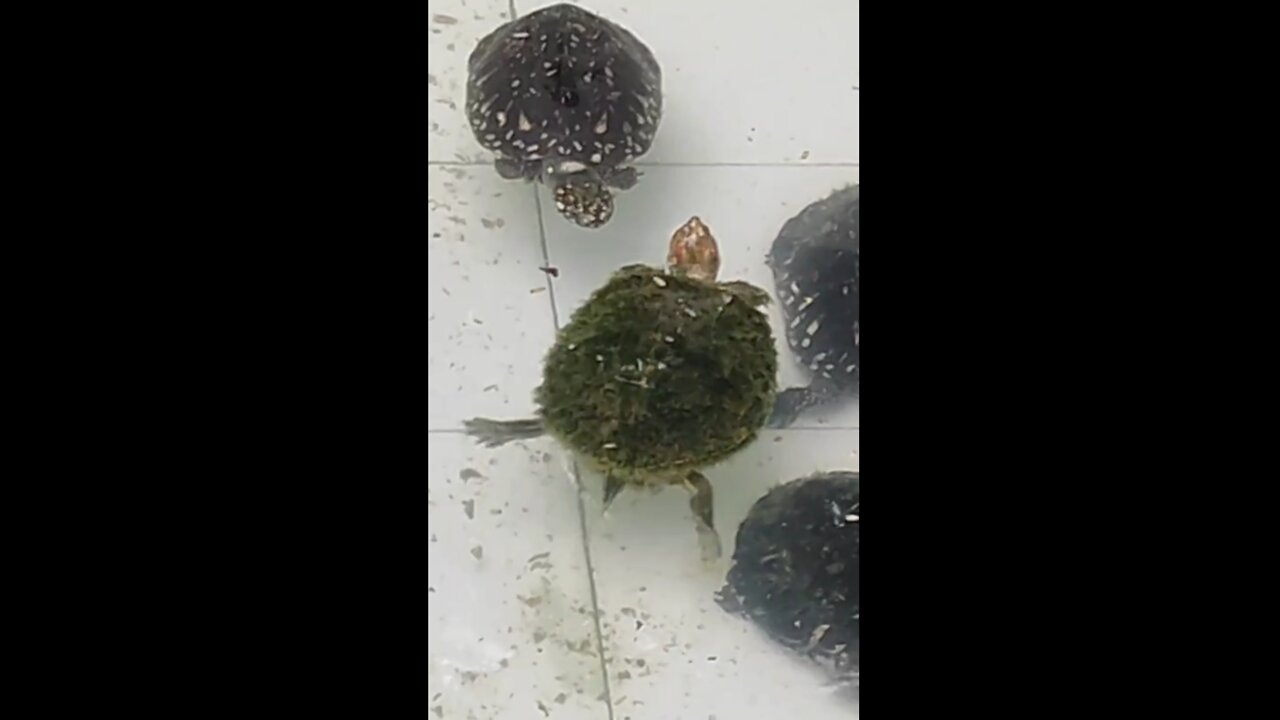Premium Only Content

Maney tortoise in water.
Tortoises (/ˈtɔːr.təs.ɪz/) are reptiles of the family Testudinidae of the order Testudines (Latin: tortoise). Like other turtles, tortoises have a shell to protect from predation and other threats. The shell in tortoises is generally hard, and like other members of the suborder Cryptodira, they retract their necks and heads directly backward into the shell to protect them.
Testudinidae
Temporal range: Eocene–Recent
PreꞒ
Ꞓ
O
S
D
C
P
T
J
K
Pg
N
Aldabra giant tortoise
(Aldabrachelys gigantea)Scientific classificationKingdom:AnimaliaPhylum:ChordataClass:ReptiliaOrder:TestudinesSuborder:CryptodiraSuperfamily:TestudinoideaFamily:Testudinidae
Batsch, 1788Type genusTestudo
Linnaeus, 1758
Tortoises can vary in size with some species, such as the Galápagos giant tortoise, growing to more than 1.2 metres (3.9 ft) in length, whereas others like the Speckled cape tortoise have shells that measure only 6.8 centimetres (2.7 in) long.[1] Several lineages of tortoises have independently evolved very large body sizes in excess of 100 kg, including the Galapagos giant tortoise and the Aldabra giant tortoise. They are usually diurnal animals with tendencies to be crepuscular depending on the ambient temperatures. They are generally reclusive animals. Tortoises are the longest-living land animals in the world, although the longest-living species of tortoise is a matter of debate. Galápagos tortoises are noted to live over 150 years, but an Aldabra giant tortoise named Adwaita may have lived an estimated 255 years. In general, most tortoise species can live 80–150 years.
Tortoises are placid and slow-moving, with an average walking speed of 0.2–0.5 km/h.
-
 LIVE
LIVE
Matt Kohrs
11 hours agoMarkets Tilted, OPEX Chaos & Payday Friday || Live Trading
564 watching -
 33:34
33:34
Rethinking the Dollar
56 minutes agoFed Signals Liquidity To the Rescue! | Friday News Update: Let's Talk...
3.58K -
 1:41:58
1:41:58
Graham Allen
3 hours agoTrump: “SEDITIOUS BEHAVIOR, punishable by DEATH!” Dems LOSING It!
122K840 -
 LIVE
LIVE
Badlands Media
10 hours agoBadlands Daily Nov. 21, 2025
3,788 watching -
 LIVE
LIVE
Wendy Bell Radio
6 hours agoOh HELL NO
6,956 watching -
 LIVE
LIVE
Major League Fishing
8 days agoLIVE! - Fishing Clash Team Series: Summit Cup - Day 6
173 watching -
 LIVE
LIVE
Caleb Hammer
3 hours agoThe Most Hated Person In Financial Audit History
129 watching -
 LIVE
LIVE
The Big Mig™
3 hours agoTraitors Committing Sedition Says President Trump
2,301 watching -
 30:49
30:49
MetatronHistory
17 hours agoThe Truth about Women Warriors Based on Facts, Evidence and Sources
12.6K6 -
 15:17
15:17
IsaacButterfield
7 hours ago $0.44 earnedAustralia’s Most Hated Politician
13.4K7